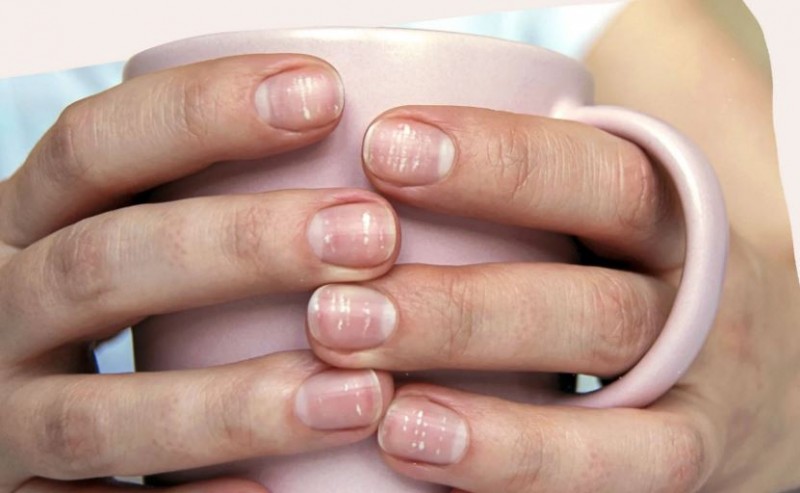
Have you ever closely examined your nails? While most people have ordinary nails, some may notice white patches or discoloration. Often dismissed, these white patches can actually be a sign of a condition known as leukonychia. It's crucial to understand the potential causes and when it might be necessary to consult a doctor.
Leukonychia is a condition where white lines or spots begin to appear on the nails of the hands and feet. It can manifest in four main types:
Total Leukonychia: This type results in the complete whitening of the entire nail plate, commonly affecting all 20 nails.
Partial Leukonychia: White lines or spots appear only on part of the nail.
Punctate Leukonychia: This type involves the formation of small white dots on the nail.
Striate Leukonychia: White streaks or bands form on the nails.
Causes of Leukonychia:
Leukonychia, characterized by white patches or discoloration on nails, can be attributed to various factors. Understanding these causes is crucial for proper management and prevention.
Trauma or Injury:
Leukonychia often results from trauma or injury to the nail matrix. Even seemingly minor incidents can lead to the formation of white spots or lines on the nails.
Prevention: Practicing caution to avoid injuries to the nails can significantly reduce the likelihood of leukonychia.
Fungal Infections:
Fungal infections are a common culprit for white discoloration of the nails. Recognizing the signs early is essential for prompt treatment.
Treatment: Antifungal medications prescribed by a healthcare professional can effectively address fungal infections causing leukonychia.
Allergic Reactions:
Allergies to nail polish, gloss, hardeners, or polish removers can manifest as white patches on the nails.
Prevention: Opting for hypoallergenic nail products and regularly changing nail polish can help prevent allergic reactions.
Genetic Factors:
In rare cases, leukonychia may have a genetic component, passed down through generations due to specific gene mutations.
Genetic Counseling: Individuals with a family history of leukonychia may consider genetic counseling for a better understanding of potential risks.
When to Seek Medical Advice:
Identifying when to consult a healthcare professional is crucial for timely intervention and proper management of leukonychia.
Persistent White Patches:
If white patches on the nails persist, seeking medical advice is essential to determine the underlying cause.
Medical Evaluation: A doctor can conduct a thorough examination to identify the root cause and recommend appropriate measures.
Fungal Infections:
When leukonychia is suspected to be a result of a fungal infection, prompt medical attention is necessary.
Antifungal Treatment: Timely diagnosis allows for the prescription of antifungal medications to address the infection effectively.
Nutritional Deficiencies:
Leukonychia can be a sign of nutritional deficiencies. Seeking medical advice helps in assessing overall health and addressing any nutrient imbalances.
Dietary Changes: A healthcare professional may recommend dietary modifications or supplements to address nutritional deficiencies.
Allergic Reactions:
If allergic reactions are suspected, consulting a doctor can help identify the allergen and prevent future occurrences.
Allergy Testing: Allergy testing may be recommended to pinpoint specific substances causing the allergic reactions.
Underlying Health Issues:
Leukonychia might be a symptom of an underlying health condition. Seeking medical advice is crucial for a comprehensive evaluation.
Diagnostic Tests: The doctor may conduct diagnostic tests to rule out or identify any associated health issues.
Prevention and Treatment:
Effective prevention and treatment strategies are essential for managing leukonychia and maintaining optimal nail health.
Fungal Infections:
Prevention involves practicing good nail hygiene and avoiding environments conducive to fungal growth.
Antifungal Measures: Using antifungal creams or powders can be preventive, especially in situations where exposure is likely.
Nutritional Deficiencies:
Addressing nutritional imbalances is key to preventing leukonychia due to deficiencies.
Dietary Guidance: A healthcare professional can provide dietary guidance and recommend supplements as needed.
Allergies:
Preventing allergic reactions involves choosing hypoallergenic nail products and being attentive to any signs of irritation.
Patch Testing: Patch testing can help identify specific allergens and guide product choices.
Hygiene Practices:
Maintaining good nail hygiene is fundamental to preventing leukonychia caused by infections or injuries.
Regular Inspections: Regularly inspecting nails for any changes allows for early detection and intervention.
In conclusion, while leukonychia is often benign, it's essential to pay attention to changes in your nails and seek medical advice if needed. Understanding the potential causes and early intervention can help maintain healthy nails and overall well-being.
Are You Struggling with Sleep Deprivation? Try Adding These Foods to Your Diet for Better Sleep
The Healing Power of Warm Water: Ayurvedic Secrets of Hot Water
Eggs And Diabetes: Breaking Myths, Embracing Health, Know These Things